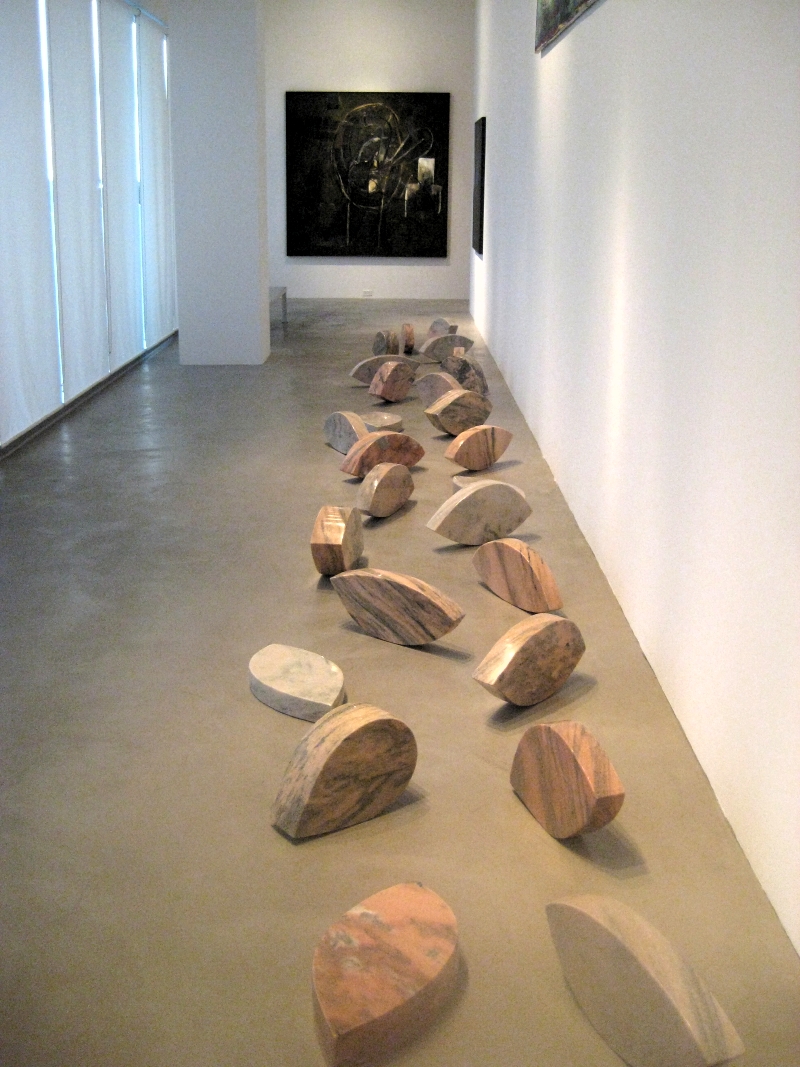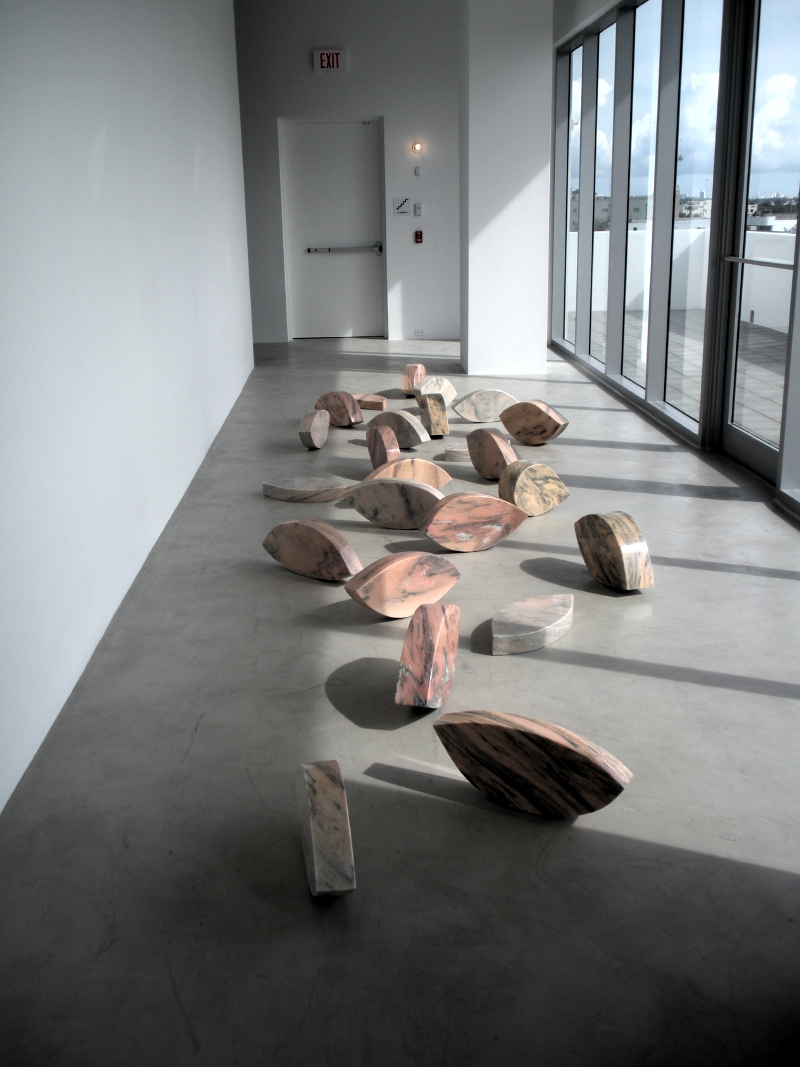
installation at the de la Cruz Collection Contemporary Art Space, 2010
Hojas Libres, 1995-1996
28 marble shapes
Dimensions variable
Carved from a shade of stone that could be associated with human flesh, each leaf is shaped from a rectangular block of marble, which was sanded and polished to reveal the coloration and structure of the stone. Originally intended to be installed in small groups, many of the leaves in the series were initially shown in 1996 to honor the work of Felix Gonzalez-Torres who had recently died. Leaves were also an important image in the work of Ana Mendieta, a close friend of Trasobares, with whom she collaborated on several projects in South Florida.
Leaves are emblematic of the passage of time and changing seasons in many cultures. In any configuration of these gravity-bound leaves, Trasobares invites viewers to re-own the flesh, review their own presence, re-consider the beauty of the natural world and renew social alignments.
In 1996, considering Trasobares' work, including these marble leaves, Tami Katz-Freiman wrote:
"… In an era which treats beauty with suspicion, taking it as a sign of the cancellation of logic in the face of temptation, as a decorative weakness or a political incorrectness – in the sense of refraining from dealing with “real life” – encountering the beauty of Trasobares' new sculptures was not easy for me.
… The ascetic, simple beauty they radiate is almost erotic; it is an existing, rather than mediating beauty, in the sense of "its being there." The fascination rendered by the beauty of the shapes and the formal and material set of relations took me back to the texts of the theoretician Dave Hickey, who has recently attempted to reintroduce the rhetoric of "beauty" and the "beautiful" into the current artistic discourse and bring the work of art into a tempting, disconcerting position of accessibility. In his texts he tries to redeem art from the preoccupation with the political and the institutional, challenging the discussion which shifts the viewer's attention from art itself.
… This act of shifting the viewer's attention back to "art itself", especially by someone (Trasobares) for whom the preoccupation with the political and the institutional has been at the core of his artistic work, to the extent of exhaustion, may be interpreted in a positive reading as a radical act, and in an austere reading as a kind of relinquishment, reconciliation, or simply giving up as part of maturing..."
Source: Tami Katz-Freiman, "I AND THOU: Processes of Abandonment and Anorexic Purification in César Trasobares' New Sculptures,"
MIAMI ART PAPER, March 1996, Vol. 1 No. 1

display study, de la Cruz Collection Contemporary Art Space, November 2009
RELATED WORK:
You and Me 1, 1994
Oak and marble
Dimensions variable
HOME